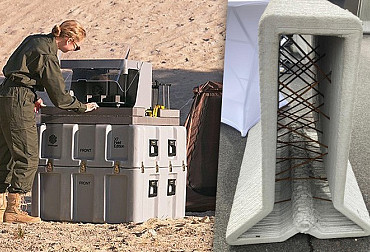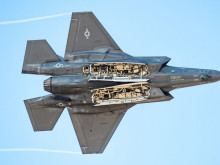Tariffs could trigger geopolitical shifts
While attention is currently focused on negotiations between the US and Russia regarding the terms for ending the conflict in Ukraine, much less attention is being paid to the geopolitical consequences of the US imposing tariffs, most notably in the case of India.

Negotiations between the US and Russia
It is likely that the negotiations between US President Donald Trump and Russian President Vladimir Putin did not only concern the end of the conflict in Ukraine. The talks were also expected to focus on improving or normalizing US-Russia relations and resuming cooperation, particularly in the economic and security spheres. It has been suggested that the US president's motivation for improving these relations could also be an interest in weakening the alliance between Russia and China.
Imposition of tariffs on India
Even before the first meeting between the two presidents in Alaska, the US imposed tariffs on India. After months of deadlock in negotiations on a trade agreement between the US and India, Donald Trump announced that he would impose an additional 25% tariff on Indian imports in response to India's continued purchases of Russian oil. India has until August 27 to negotiate, when the additional tariffs will come into effect after a 21-day grace period. If there is no change, the total tariff on Indian goods imported into the United States will reach 50%. Much may change before the deadline, depending on Russia's negotiations with the US and diplomatic talks between India and the US. It cannot be ruled out that the US and Russian presidents will want to reach an agreement on access to India that would benefit both sides during talks on ending the conflict in Ukraine.
It is also worth mentioning that Indian Prime Minister Modi is preparing for the Shanghai Cooperation Organization summit, which begins on August 31 in Tianjin, northern China. Modi will thus visit China after more than seven years. It is likely that further US tariffs could provide an important impetus both for India's rapprochement with China and for deepening existing cooperation between India and Russia, provided that India maintains its position, i.e., rejecting US demands. However, this may not only concern purchases of Russian oil, but also US demands to open the Indian market to American agricultural crops and dairy products, which is unacceptable to Modi given his voter base. Recently, there have also been reports that the India allegedly failed to show sufficient gratitude for US President Donald Trump's involvement in resolving the latest Indian-Pakistani crisis and, on the contrary, ultimately criticized his involvement.
Rapprochement between India and China and the prospects for the creation of a powerful bloc
Sanctions against Russia and tariffs on India could thus result in deeper ties between India and Russia, but also in efforts to deepen India's cooperation with China. These three countries could then form a powerful political and economic bloc, which would represent a completely new situation for the US.
China alone could gain further significant reinforcement of its position in promoting global geopolitical interests, including strengthening its position in the rivalry with the US. It cannot be overlooked that India has the fourth strongest army in the world and ranks fifth in the list of countries with the highest defense spending. China has the third strongest army in the world and Russia the second strongest. All three countries also possess nuclear weapons. Moreover, the Chinese army is developing at a pace that causes considerable concern, particularly among its main rival, the US. This is not so much a quantitative increase in armed forces, but rather an increase in their capabilities through the introduction of new technologies.
The Indian Prime Minister and Chinese President Xi Jinping improved relations during talks at the BRICS summit in Russia in October 2024, and this was followed by other conciliatory steps, such as an agreement to resume direct flights, issue tourist visas, and ease restrictions on urea exports to India. China is therefore currently offering India closer cooperation.
Conclusion
Whether the talks between US President Donald Trump and Russian President Vladimir Putin will have any impact on the tariffs imposed on India remains to be seen. In any case, the deterioration of relations between the US and India is a welcome opportunity for Chinese and Russian diplomacy. Given the worsening conditions for exporting its goods to the US, India will logically seek to find alternative markets. In addition to Russia and China, these could include other countries in the BRICS economic bloc. The world has been changing very dynamically recently, and some decisions can significantly accelerate these changes. It is therefore necessary to expect the emergence of new allies and allied blocs, including new spheres of influence. This trend has great potential for the emergence of confrontations of varying intensity, and therefore everything should be done to help create and maintain international relations in accordance with international law and with the aim of preventing the outbreak of armed conflicts.




















